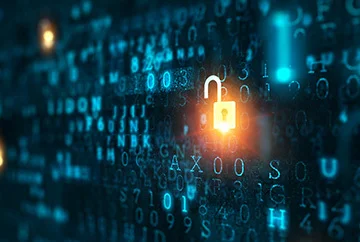Why Transform Cybersecurity Regulatory Compliance in FS?
Cyber security firm VMware revealed that cyberattacks in the financial sector across the globe grew by 238% from February 2020 to the end of April, with around 80% of financial institutions reporting an increase in cyberattacks. Ransomware attacks shot up 9x during the same period. Capital One bank in 2019 faced one of the largest-ever incidents of a data breach, resulting in an $80m fine and several lawsuits by affected customers.
In 2020, the Securities Exchange Commission in the US warned about a surge in the number and level of sophistication of ransomware attacks on US financial institutions. These cybersecurity attacks only seem to be intensifying every passing day, and with COVID-19, the occurrence has increased multifold.
Financial regulators have laid a significant thrust on cyber resilience and business continuity to bolster resilience. A recent Fortunly report threw some startling stats where it revealed that the cost of mitigating cyber attacks on banks reached $18.3 million annually per company. Manual approaches to counter such threats could make companies more susceptible to such attacks. AI and automation quickly prove their worth in managing the regulatory risk value chain to streamline and speed up cybersecurity compliance.
How AI and Automation Can Help?
In the light of the high-risk nature of the sector, financial institutions adhere to burdensome global compliance obligations. Additionally, different regions enforce various other compliance norms that keep frequently changing, ultimately making the whole cybersecurity regulatory compliance process a cumbersome affair for fintech. In such scenarios, the deployment of AI and advanced analytics to vast amounts of internal and external data assists in generating predictive, usable insights, helping fintech firms make better cyber decisions and protect their organizations from non-compliance.
Artificial intelligence facilitates compliance officers and institutions to automate all elements of their communications data management, such as capturing data, enriching it with third-party data such as CRM, and the ability to investigate seamlessly, archive, and retain data.
Additionally, artificial intelligence can bring together all data sources, doing advanced searches, and performing complete investigations more efficiently. Artificial intelligence is also revolutionizing financial compliance and redefining how communications compliance risk is managed. Financial institutions can mitigate risk, improve operational efficiency, and reduce compliance costs by proactively detecting and sending alerts on abnormalities in communication, including violations such as insider trading, providing in-depth analysis and breakdown of various communication triggers.
AI and NLP For Cybersecurity Assessment Data Intake
With the integration of AI and Natural Language Processing (NLP), CISOs can enhance their cybersecurity compliance measures by making better sense of data coming out of a security tech stack, which helps them understand where and how various tools and solutions achieve cybersecurity regulatory compliance programs across standards.
With its self-learning capability, NLP keeps improving itself to become more efficient in enhancing cybersecurity processes. Through automation of assessments, business leaders can get real-time risk monitoring insights. Additionally, utilizing behavioral analytics to create baseline markers of normal user behavior, NLP creates a profile for each user and then monitors any abnormal occurrences while continually learning & inferring from new behavioral patterns. Additionally, NLP can analyze and classify documents, obtaining crucial information such as client information, products, and processes that can impact regulatory change. Automating the regulatory change management process is a critical use case of AI.







